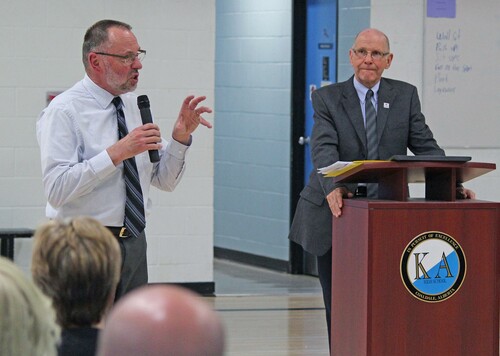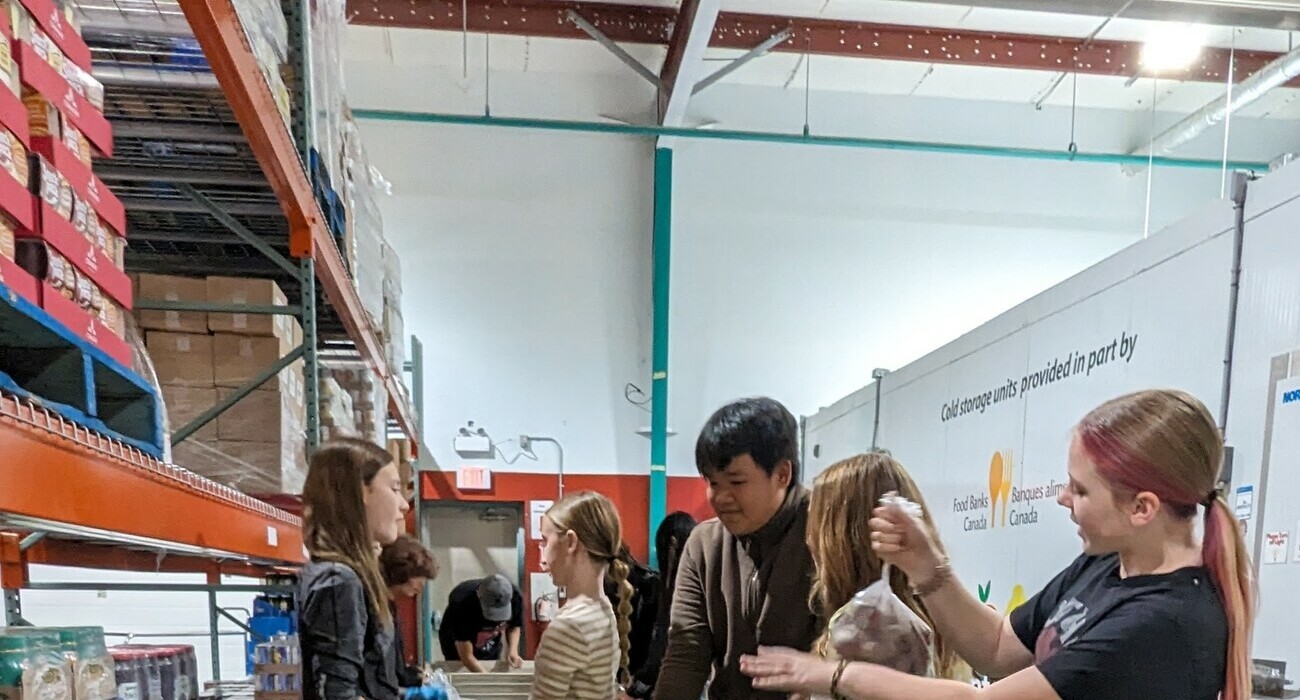
COALDALE – No easy solutions have surfaced through two open house meetings, but Palliser Regional Schools is confident it’s on the right path towards addressing challenges at its facilities here.
Parents may have been looking for answers at the follow-up meeting May 8, but Chair Robert Strauss said board members didn’t want to come in and dictate changes to be made, given the potential impact of any of the options raised to date.
He opened the meeting, which attracted a crowd of about 80 to the Kate Andrews High School gym, by noting its purpose was to continue dialogue between Palliser and the community, and no decisions were to be made until sometime in the 2017-18 school year.
“We will work together, and we will come up with a solution,” said Strauss at the meeting, for current and perspective parents at Sunnyside School, Jennie Emery Elementary, R.I. Baker Middle School, John Davidson School and Kate Andrews High School.
The meetings are part of a process to address space needs in some schools - Jennie Emery Elementary is full - and the longer-term growth in the community.
Plans finalized before the first public meeting in January called for Palliser Beyond Borders at Coaldale (formerly PASS+ Outreach School) to move out of John Davidson School to its own premises on 20th Street for the coming school year. Otherwise, no changes which might result from the ongoing conversation would come into effect until the 2018-19 school year at the earliest.
January’s meeting resulted in 61 public submissions, a number Acting Superintendent Dr. Garry Andrews called “significant.” He addressed a number of those options, pointing out the possible benefits as well as challenges involved with each of them.
Andrews explained utilization rates and what it takes for Alberta Education to approve funding for a new school or major modernization. Once approved, it’s often three to five years between project announcement and the actual school opening.
“We’re looking to deal with the short term solutions first, and then work on the long-term,” said Andrews. The Board intends to have two or three possible options out to the community for further feedback next fall. “This whole process starts with awareness and dialogue.”
During the question and answer portion of the meeting the crowd heard that grade reconfiguration could free up some classroom space, although those scenarios propose date would require some renovations to meet the students’ new needs. In certain cases changes would likely impact school philosophy as well, so this would also need to be addressed before any decisions are made.
Other feedback suggested Palliser purchase former area schools in McNally and Readymade and re-open them to alleviate some of the pressure at existing schools. The current mix of students by grade might make that challenging. Not all the students who would move to a re-opened school would be from one grade and therefore might not free up a classroom in their original school, Andrews said.
The possibility of finding more space by busing students to other communities, like the replacement school approved for Huntsville, was also suggested as a long-term solution. While this could be possible for some students, it might not free up space in existing schools unless an entire grade was moved.
There was some concern aired over a growing international students program, and the pressure this added to the facility challenge. Tom Hamer, Director of Learning, International students, emphasized students are only placed in schools where there is room. It’s also hoped more elementary school placements will lead to more international students attending high school in Coaldale. He added he has seen for himself the benefits of exposing traditional Palliser students to visiting students from another culture.
Andrews said the school division – which will add another Islamic school to the family in Calgary this fall – is committed to philosophy of diversity and will provide supports where it possibly can.
In that regard it was noted the Low German-speaking Mennonite community is among the fastest growing populations in the area. Palliser currently has 700 LGM students, which accounts for about 20 per cent of the population within traditional division boundaries. In 2006-07 it was estimated there were less than 50 LGM students in all Palliser schools.
For instance, John Davidson School can use the space vacated by PASS+ as enrolment has grown from 99 students in 2007-08 to 181 students in 2017-18. As a result, there is not sufficient space to move pre-school or kindergarten programs from Jennie Emery to John Davidson as some respondents suggested, although there are other possible locations which could be considered.
As a long-term solution it was stated that Palliser might provide more options and opportunities at Kate Andrews in order to retain Coaldale students. Andrews noted that both KAHS and R.I. Baker have recently surveyed students to see what types of courses they might like added to the menu of options and these will be taken into consideration by administration.
Strauss was joined by trustees Colleen Deitz, Debbie Laturnus, Craig Whitehead and Esther Willms. Invited guests included Chris Smeaton, superintendent of Holy Spirit Catholic school division, and Coaldale trustee Frances Cote.
There had been discussions at the previous meeting that Palliser and Holy Spirit could work together to better serve the community, perhaps in the form of a joint-use facility. Smeaton noted the utilization rate at St. Joseph School, Holy Spirit’s early learning to Grade 9 facility, is around 69 per cent.
Anyone wishing to provide comments or suggestions is asked to submit them by June 1, 2017, by email to dawn.sugimoto@pallisersd.ab.ca, by mail to Coaldale Open House, #101 3305 18 Avenue North, Lethbridge, AB T1H 5S1 or by fax to 403-380-6890.
For copies of the information shared in January, please click here.

